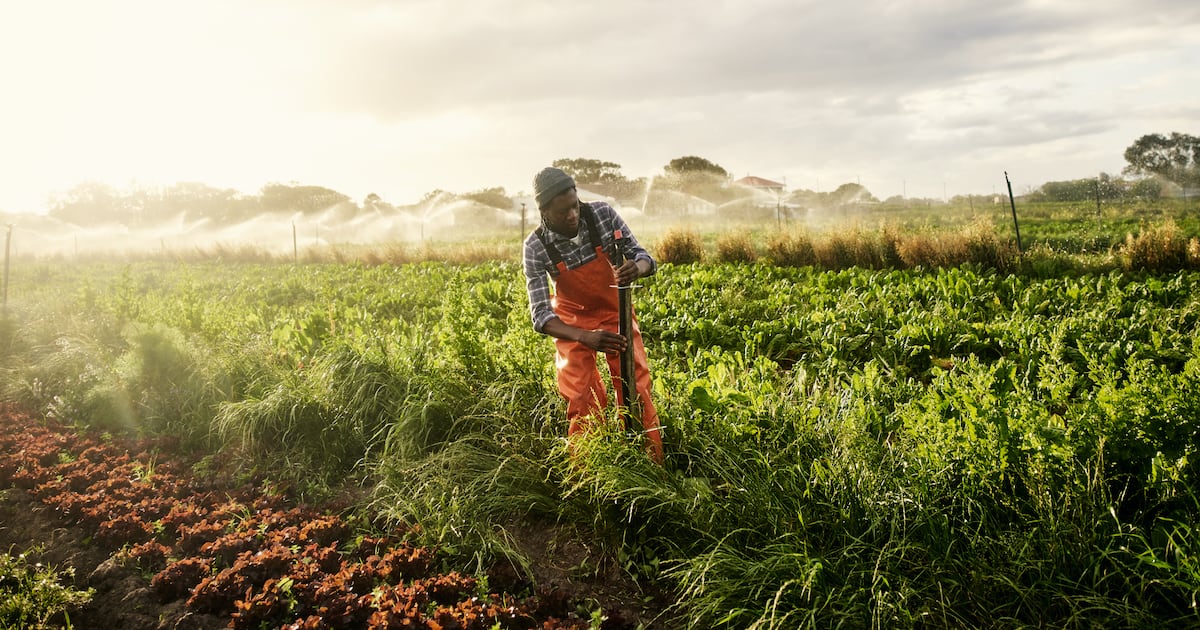
Climate change is linked to agriculture in both directions. Not only does intensive agriculture often lead to changes in land usage, which exacerbate climate change, but the effects of climate change itself – changing weather patterns, for example – have been linked to fluctuating yields in key agricultural commodities.
Furthermore, as commodity prices around the world fluctuate, the cost of food has soared in many countries and affording a healthy diet has often been difficult.
However, a recent report on food systems and its accompanying study suggest that, on a global level, yields of many key crops are in fact increasing, and those who cannot afford to eat a healthy diet are decreasing.
The Food Systems Countdown Report, which bases its parameters on the UN’s Sustainable Development Goals, found many trends, including crop yields, going in the right direction.
More people can afford a healthy diet
The report has presented two clear, albeit seemingly contradictory trends. On the one hand, the cost of a healthy diet has increased, while on the other hand, the number of those who cannot afford a healthy diet has gone down.
This is because incomes around the world have generally risen, enough to catch-up with, and overtake, the rising cost of food.
“People’s average incomes are rising fast enough to continue to afford, and for more people to afford, [a healthy diet]. They’re probably rising a little bit faster than the cost of the healthy diet,” points out Kate Schneider, one of the researchers.
“It doesn’t, of course mean people are eating these lowest-cost healthy diets even if they are technically available and affordable.”
She warns that as this is a 22-year average, ending in 2022, it does not necessarily reflect incomes keeping pace with the current cost-of-living crisis. Food inflation has been ‘stickier’ than in other areas and trends seen here may not continue.
Furthermore, despite this positive trend, the percentage of the population experiencing moderate or severe food insecurity has also increased significantly between 2015 and 2021, driven largely by an increase in South Asia and Sub-Saharan Africa (the only region where it has declined significantly is Central Asia).
Regulation’s role in health
According to the accompanying study, the government played a significant role in regulating the food environment to improve health outcomes, except in Sub-Saharan Africa and much of Central Asia, although in Africa’s case the authors acknowledge that the data may be incomplete, and some countries may have instituted policies in recent years.
In the case of Central Asia, poor governance coincided with poor health outcomes, including higher than average rates of non-communicable disease (NCD).
In the case of Sub-Saharan Africa, speculated the report, access to unhealthy food was often restricted due to poverty.
By contrast, health policies in Mexico have been shown to decrease the sales of ultra-processed foods (UPFs) along with soft drink consumption.
Crop yields have improved
Despite the impact of climate change on yields, they have increased in many areas since 2000.
For example, cereal yields have increased in most areas of the globe between 2000 and 2022, most significantly in East Asia, Europe and North America, and Latin America and the Caribbean. In some regions, such as Sub-Saharan Africa, the increase is minimal (but certainly not decreasing).
Cereals are a range of different products, points out Schneider, meaning that this increase in yields only represents an average throughout a grouping of products.
Different regions, she points out, will rely on different crops with different ranges of maximum possible yields. Rice, for example, is the main crop in East Asia, which is reflected in its high cereal yields.
Vegetable yields show a very slight increase overall between 2000 and 2022, but a dramatic increase for Central Asia, and a significant increase for Europe, North America, North Africa and Western Asia.
Fruit yields have increased more substantially for all regions between 2000 and 2022, including very dramatically for Central Asia. Latin America and the Caribbean continues to have the highest yields for fruit.
Has agriculture become more sustainable?
On the sustainability side, emissions intensity of beef production has decreased dramatically in South Asia, where beef yields have also gone down. It has also decreased substantially in South East Asia and East Asia, without affecting beef yields.
In Europe and the US, where beef yields are the highest, emissions intensity has barely changed since 2000. In Sub-Saharan Africa emissions intensity has increased and is now the world’s highest.
Nitrogen use efficiency has only very slightly improved as a global average, with East Asia improving more significantly.
Sourced From: Nature Food
‘Governance and resilience as entry points for transforming food systems in the countdown to 2030’
Published on: 14 January 2025
Doi: https://doi.org/10.1038/s43016-024-01109-4
Authors: K.R. Schneider, R. Remans, T. H. Bekele, D. Aytekin, P. Conforti, S. Dasgupta, F. DeClerck, D. Dewi, C. Fabi, J. A. Gephart, Y. J. Masuda, R. McLaren, M. Saisana, N. Aburto, R. Ambikapathi, M. A. Rodriguez, S. Barquera, J. Battersby, T. Beal, C. Béné, C. Cafiero, C. Campeau, P. Caron, A. Cattaneo, J. Candel, N. Covic, I. del Pino Alvarez, A. P. D. Barreto, I. Elouafi, T. J. Frazier, A. Fremier, P. Foley, C. D. Golden, C. G. Fischer, A. Guarin, S. Hendriks, A. Herforth, M. Honorati, J. Huang, Y. Getaneh, G. Kennedy, A. Laar, R. Lal, P. Lidder, G. L. Feye, B. Loken, H. Malapit, Q. Marshall, K. A. Mulatu, A. Munguia, S. Nordhagen, D. Resnick, D. Suhardiman, U. R. Sumaila, B. Sun, B. T. Mengesha, M. T. Cullen, F. N. Tubiello, C. Dooren, I. Valero Morales, J. Vivero-Pol, P. Webb, K.h Wiebe, L. Haddad, M. Herrero, J. R. Moncayo & J. Fanzo
